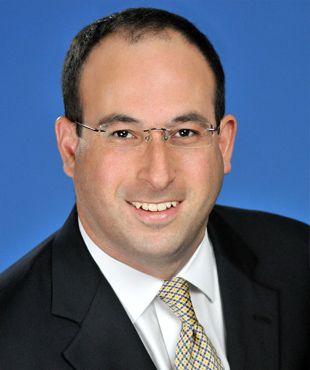Frank Cruz-Alvarez is a Partner with Shook, Hardy & Bacon L.L.P. in the firm’s Miami, FL office, and Britta Stamps is an Associate in the firm’s Kansas City, Mo office.
“The most damaging phrase in the language is ‘We’ve always done it this way.’”
– Rear Admiral Gracy Murray Hopper, recipient of the Presidential Medal of Freedom.
The parties in Johnson v. Dickenson learned just how damaging it can be do things the way they have always been done. Despite decades of commonplace practices in class action settlements, the U.S. Court of Appeals for the Eleventh Circuit drew a line in the sand and said no more.
The timeline and procedural details that many attorneys are accustomed to skimming past when reading case law became the critical points on which the Eleventh Circuit based its decision in Johnson. The named plaintiff filed a putative class action in March 2017 alleging violations of the Telephone Consumer Protection Act against the defendant. Following some preliminary discovery and motions practice, the parties promptly settled the case and the case proceeded quickly from there:
- November 2, 2017: the parties jointly filed a notice of settlement. The named plaintiff moved to certify the class for settlement purposes shortly thereafter.
- December 4, 2017: the district court preliminarily approved the settlement and certified the class for settlement purposes. In the preliminary approval order, the court stated that the named plaintiff could “petition the Court to receive an amount not to exceed $6,000 as acknowledgement of his role in prosecuting this case on behalf of the class members.”
- January 2018: class members were notified of the settlement, with three key pieces of information: (1) defendant would establish a settlement fund; (2); class counsel would seek attorneys’ fees amounting to 30% of the fund; and (3) the named plaintiff would seek a $6,000 incentive award from the fund.
- March 19, 2018: the deadline set by the court for class members to not only opt out of the settlement, but also to file objections to the settlement. One class member filed an objection, which later formed the basis for the appeal to the Eleventh Circuit.
- April 6, 2018 : the deadline set by the court by which the named plaintiff and the defendant were to submit their motion for final approval of the settlement and their responses to objections, as well as the date by which class counsel was to submit their petition for attorneys’ fees and costs. On this filing deadline, the parties opposed the objection and filed a motion for final approval.
- May 2018: the district court held a final fairness hearing at which class counsel, the defendant, and the objector presented arguments. The court announced its intention to approve the settlement, briefly stating that it was going to overrule the objection but that it appreciated the argument from the objector. Later the same day, the district court entered an order approving the settlement.
On appeal the Eleventh Circuit emphasized the same point with regard to all three issues: simply because something has always been done a certain way, does not mean that way is correct.
The holding most impactful to practitioners involves incentive fees to named plaintiffs. Both class counsel and defense counsel have grown accustomed to incentive fees—often amounting to a few thousand dollars, such as the $6,000 incentive fee at issue here—being awarded to named plaintiffs in class action settlements. But what is the basis for such awards? The Eleventh Circuit traces them all the way back to the 1880s. Specifically, the court pinpointed the Supreme Court’s decisions in Trustees v. Greenough, 105 U.S. 527 (1882) and Central Railroad & Banking Co. v. Pettus, 113 U.S. 116 (1885) as the origin for incentive awards to named plaintiffs. The court summed up the limits that Greenough and Pettus established on the types of awards that attorneys and litigants may recover from a common fund: “A plaintiff suing on behalf of a class can be reimbursed for attorneys’ fees and expenses incurred in carrying on the litigation, but he cannot be paid a salary or reimbursed for personal expenses.” Considering the evolution of the incentive award, the Eleventh Circuit recognized: “the modern-day incentive award for a class representative is roughly analogous to a salary,” that also “promote[s] litigation by providing a prize to be won.” As part-salary and part-bounty, then, the Eleventh Circuit struck down the concept of modern-day incentive awards.
The dissent emphasized the overall fairness of incentive awards for class representatives, but the majority remained unmoved by how fair or common incentive awards are: “Although it’s true that such awards are commonplace in modern-class action litigation, that doesn’t make them lawful, and it doesn’t free us to ignore Supreme Court precedent forbidding them.” The court concluded the issue by inviting the Supreme Court to overrule Greenough and Pettus, the Rules Committee to amend Rule 23, or Congress to provide for incentive awards by statute. For now, though, it seems incentive awards will be prohibited in the Eleventh Circuit and will be, at the very least, scrutinized more closely in other circuits.
The Eleventh Circuit also took issue with two other common tactics. First, the court held that the district court violated Rule 23(h) when it set a schedule requiring class members to object to the attorneys’ fee award before class counsel had filed their fee petition. Although the court also held this to be harmless error, litigants should take care in crafting proposed schedules to avoid trouble with Rule 23(h) by setting the deadline for objections after the deadline for class counsel’s petition for attorneys’ fees. Finally, criticizing the lack of explanation in the district court’s final order, the Eleventh Circuit remanded the case to the district court to provide further explanation on several points. Simply stating that the objection was overruled and merely reciting factors about the fairness of the settlement created too thin of a record for the Eleventh Circuit to determine whether the district court abused its discretion. Remand was therefore necessary to provide the district court an opportunity to adequately explain its fee award decision.
In sum, the Eleventh Circuit’s emphasis on precedent from the 1880’s to undo a concept that has become common practice is quite curious in today’s political climate. For class action practitioners, the dissent makes clear that the door is not completely shut to payments of some form to class representatives. How such a payment might make it to the named plaintiff is an open question, but it certainly cannot be under the term “incentive award.” Creative attorneys will figure out ways to create payments to named plaintiffs, so defendants should be vigilant about the details of any payments made to named plaintiffs going forward.


